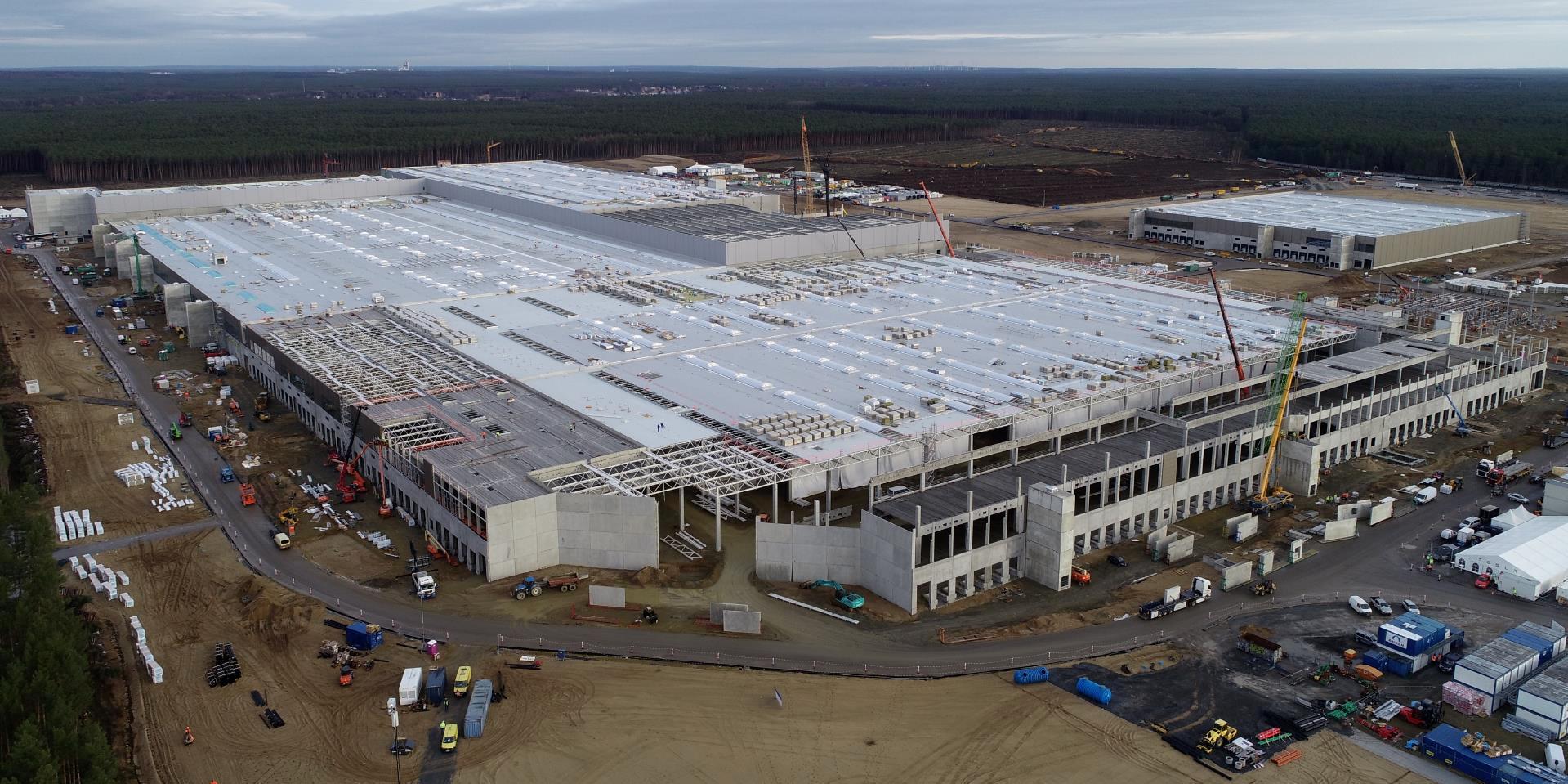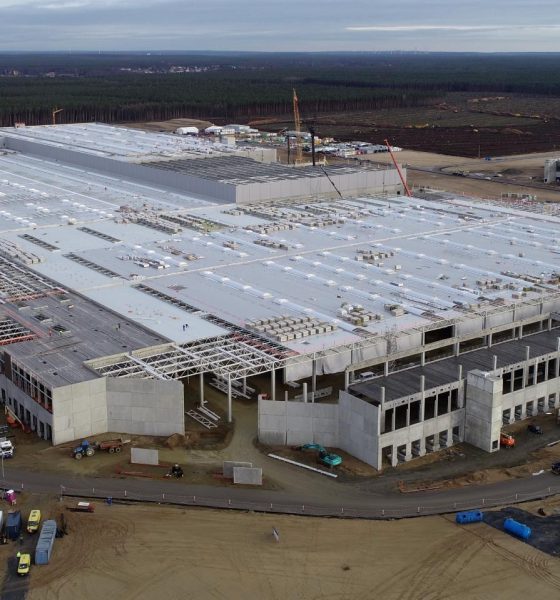

News
Tesla’s ‘preferential treatment’ justified by Brandenburg Environmental Minister
Tesla’s “preferential treatment” in Berlin has been attacked by numerous environmental groups who disagree with the automaker’s current construction project that is going on in the town of Brandenburg. Since the site’s initial groundbreaking and land preparation efforts in early 2020, citizens and “green” groups have come to pledge their distaste for Tesla’s introductory European production plant. However, local government officials are more than willing to come to justify Tesla’s presence in the area, especially as it provides a substantial economic boost to an area that thirsts for steady, well-paying manufacturing jobs. Brandenburg Environmental Minister Axel Vogel is just one of those politicians coming to Tesla’s rescue, justifying the company’s treatment in the area.
Since the announcement by CEO Elon Musk in late 2019 that provided some context of what would eventually become known as “Giga Berlin,” numerous voices have pushed back against Tesla’s efforts in Germany. Despite this, the company has made reasonable progress in the past 21 months. Tesla has managed to take what was once a regular plot of land covered in low-grade trees used for commercial cardboard production and transform it into one of Earth’s most impressive vehicle production facilities. At least that’s what will be there when the factory becomes operational in several months.
Until then, Tesla will continue building the factory, erecting several portions of the plant that will eventually house the production of the Model Y crossover and Tesla’s recently unveiled 4680 battery cells. The cells, a groundbreaking step in developing Tesla’s EV tech, will provide more range and power to Tesla’s eco-friendly vehicles.
Although Tesla vehicles have saved over 17.9 million tons of CO2 from entering the atmosphere alone, environmental groups are not convinced the company’s factory will provide stable and eco-friendly scenarios based on by-products of vehicle production. In fact, groups who have been identified as NABU and Gruene Liga recently stated that they are not interested in Tesla producing batteries at the plant because of potentially hazardous waste.
Tesla ironically faces pushback at Giga Berlin from environmental groups
The groups told Reuters earlier this month:
“The objection is based on the claim that Tesla has not sufficiently clarified what precautions it will take to prevent highly poisonous gas from escaping from the factory, the objection document showed.”
Now, Brandenburg Environmental Minister Axel Vogel is coming to Tesla’s defense, giving them a justification for their preferential treatment regarding approved documents for certain elements of their factory.
Vogel said (via Maz Online):
“We are convinced that it is right to give Tesla preferential treatment, because the Tesla site has an incredibly positive, Europe-wide impact.”
#GigaBerlin
Brandenburg’s environment minister defends preferential treatment for Tesla.
“We are convinced that it is right to give Tesla preferential treatment, because the Tesla site has an incredibly positive, Europe-wide impact,” says the minister.https://t.co/pecuiVjd7x pic.twitter.com/owZEKH1qQV— @GF4Tesla ?? ?? ?️?️.build #GigaBerlin. (@Gf4Tesla) June 23, 2021
Vogel recognizes the concrete impact that Tesla could have on the region when Giga Berlin begins operation. Not only is the plant going to supply local citizens with jobs that are secure, comfortable, and well paying, but the environmental impacts also align with the strict and ambitious climate goals that Europe and Germany have both set. The European Union has been plotting a ban for ICE vehicles in 2025, according to Euractiv, and Germany has a set target of 2030 for the date it will stop allowing pollution-emitting vehicles to roam the streets.
Environmental groups are concerned with the production of the vehicles, which will result in some pollutants. However, these groups could be protesting any automaker, or basically, any large company in the world as manufacturing does, unfortunately, result in emissions. However, after Tesla cars roll off of production lines, no emissions will leave the vehicle, as the company’s battery-driven powertrains make for the most environmentally friendly form of passenger transportation on Earth.

News
Tesla China delivery centers look packed as 2025 comes to a close
Needless to say, it appears that Tesla China seems intent on ending 2025 on a strong note.

Tesla’s delivery centers in China seem to be absolutely packed as the final days of 2025 wind down, with photos on social media showing delivery locations being filled wall-to-wall with vehicles waiting for their new owners.
Needless to say, it appears that Tesla China seems intent on ending 2025 on a strong note.
Full delivery center hints at year-end demand surge
A recent image from a Chinese delivery center posted by industry watcher @Tslachan on X revealed rows upon rows of freshly prepared Model Y and Model 3 units, some of which were adorned with red bows and teddy bears. Some customers also seem to be looking over their vehicles with Tesla delivery staff.
The images hint at a strong year-end push to clear inventory and deliver as many vehicles as possible. Interestingly enough, several Model Y L vehicles could be seen in the photos, hinting at the demand for the extended wheelbase-six seat variant of the best-selling all-electric crossover.
Strong demand in China
Consumer demand for the Model Y and Model 3 in China seems to be quite notable. This could be inferred from the estimated delivery dates for the Model 3 and Model Y, which have been extended to February 2026 for several variants. Apart from this, the Model Y and Model 3 also continue to rank well in China’s premium EV segment.
From January to November alone, the Model Y took China’s number one spot in the RMB 200,000-RMB 300,000 segment for electric vehicles, selling 359,463 units. The Model 3 sedan took third place, selling 172,392. This is quite impressive considering that both the Model Y and Model 3 are still priced at a premium compared to some of their rivals, such as the Xiaomi SU7 and YU7.
With delivery centers in December being quite busy, it does seem like Tesla China will end the year on a strong note once more.
News
Tesla Giga Berlin draws “red line” over IG Metall union’s 35-hour week demands
Factory manager André Thierig has drawn a “red line” against reducing Giga Berlin’s workweek to 35 hours, while highlighting that Tesla has actually increased its workers’ salaries more substantially than other carmakers in the country.

Tesla Giga Berlin has found itself in a new labor dispute in Germany, where union IG Metall is pushing for adoption of a collective agreement to boost wages and implement changes, such as a 35-hour workweek.
In a comment, Giga Berlin manager André Thierig drew a “red line” against reducing Giga Berlin’s workweek to 35 hours, while highlighting that Tesla has actually increased its workers’ salaries more substantially than other carmakers in the country.
Tesla factory manager’s “red line”
Tesla Germany is expected to hold a works council election in 2026, which André Thierig considers very important. As per the Giga Berlin plant manager, Giga Berlin’s plant expansion plans might be put on hold if the election favors the union. He also spoke against some of the changes that IG Metall is seeking to implement in the factory, like a 35-hour week, as noted in an rbb24 report.
“The discussion about a 35-hour week is a red line for me. We will not cross it,” Theirig said.
“(The election) will determine whether we can continue our successful path in the future in an independent, flexible, and unbureaucratic manner. Personally, I cannot imagine that the decision-makers in the USA will continue to push ahead with the factory expansion if the election results favor IG Metall.”
Giga Berlin’s wage increase
IG Metall district manager Jan Otto told the German news agency DPA that without a collective agreement, Tesla’s wages remain significantly below levels at other German car factories. He noted the company excuses this by referencing its lowest pay grade, but added: “The two lowest pay grades are not even used in car factories.”
In response, Tesla noted that it has raised the wages of Gigafactory Berlin’s workers more than their German competitors. Thierig noted that with a collective agreement, Giga Berlin’s workers would have seen a 2% wage increase this year. But thanks to Tesla not being unionized, Gigafactory Berlin workers were able to receive a 4% increase, as noted in a CarUp report.
“There was a wage increase of 2% this year in the current collective agreement. Because we are in a different economic situation than the industry as a whole, we were able to double the wages – by 4%. Since production started, this corresponds to a wage increase of more than 25% in less than four years,” Thierig stated.
News
Tesla is seeing a lot of momentum from young Koreans in their 20s-30s: report
From January to November, young buyers purchased over 21,000 Teslas, putting it far ahead of fellow imported rivals like BMW and Mercedes-Benz.

Tesla has captured the hearts of South Korea’s 20s-30s demographic, emerging as the group’s top-selling imported car brand in 2025. From January to November, young buyers purchased over 21,000 Teslas, putting it far ahead of fellow imported rivals like BMW and Mercedes-Benz.
Industry experts cited by The Economist attributed this “Tesla frenzy” to fandom culture, where buyers prioritize the brand over traditional car attributes, similar to snapping up the latest iPhone.
Model Y dominates among young buyers
Data from the Korea Imported Automobile Association showed that Tesla sold 21,757 vehicles to the 20s-30s demographic through November, compared to BMW’s 13,666 and Mercedes-Benz’s 6,983. The Model Y led the list overwhelmingly, with variants like the standard and Long Range models topping purchases for both young men and women.
Young men bought around 16,000 Teslas, mostly Model Y (over 15,000 units), followed by Model 3. Young women followed a similar pattern, favoring Model Y (3,888 units) and Model 3 (1,083 units). The Cybertruck saw minimal sales in this group.
The Model Y’s appeal lies in its family-friendly SUV design, 400-500 km range, quick acceleration, and spacious cargo, which is ideal for commuting and leisure. The Model 3, on the other hand, serves as an accessible entry point with lower pricing, which is valuable considering the country’s EV subsidies.
The Tesla boom
Experts described Tesla’s popularity as “fandom culture,” where young buyers embrace the brand despite criticisms from skeptics. Professor Lee Ho-geun called Tesla a “typical early adopter brand,” comparing purchases to iPhones.
Professor Kim Pil-soo noted that young people view Tesla more as a gadget than a car, and they are likely drawn by marketing, subsidies, and perceived value. They also tend to overlook news of numerous recalls, which are mostly over-the-air software updates, and controversies tied to the company.
Tesla’s position as Korea’s top import for 2025 seems secured. As noted by the publication, Tesla’s December sales figures have not been reported yet, but market analysts have suggested that Tesla has all but secured the top spot among the country’s imported cars this year.








